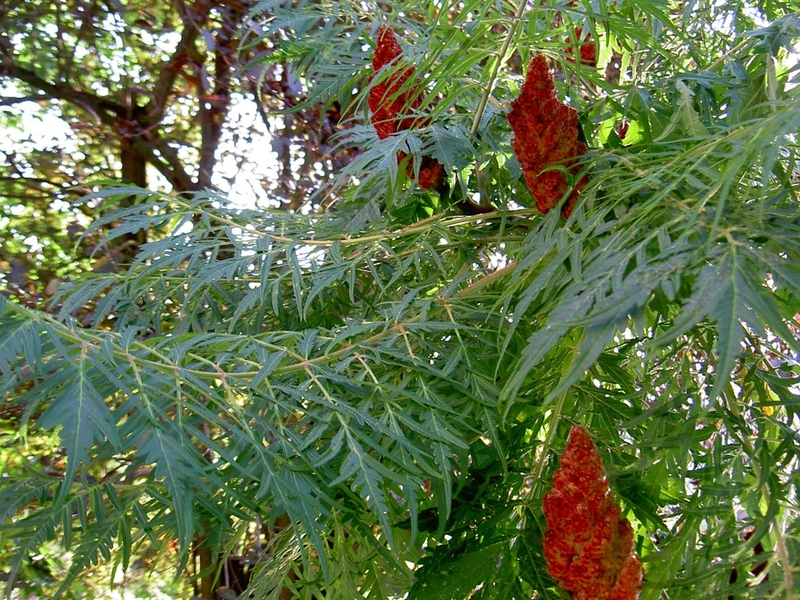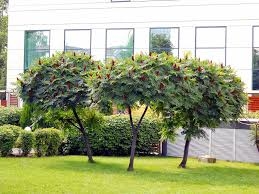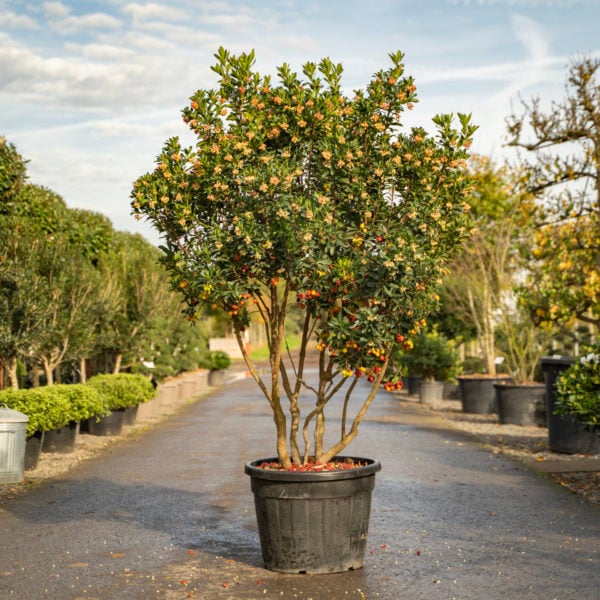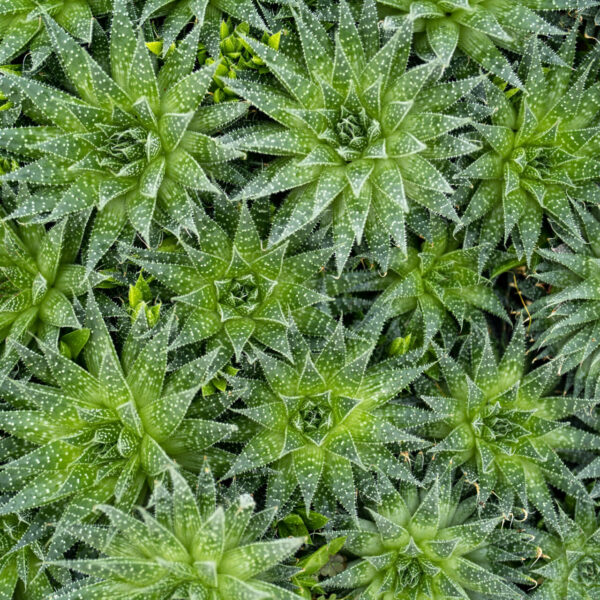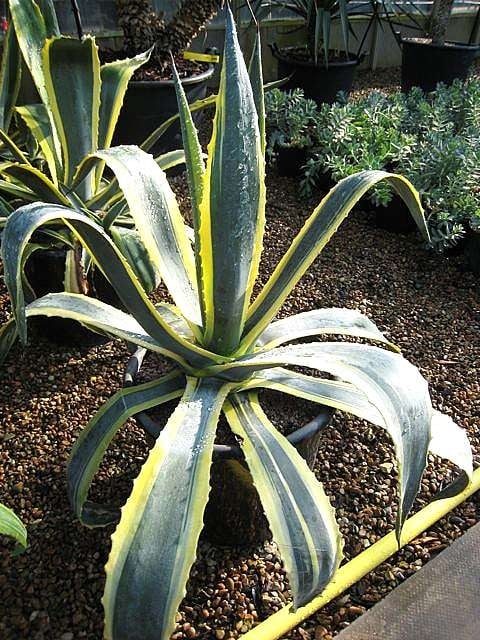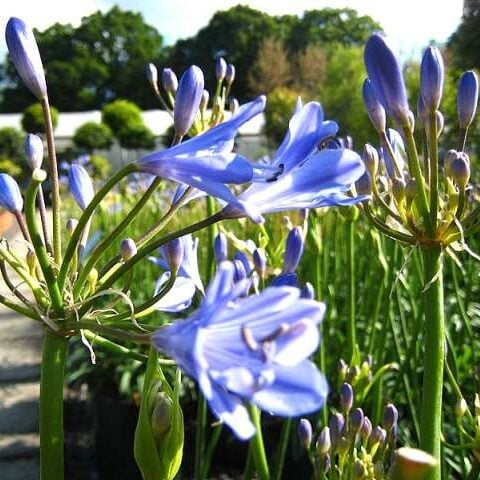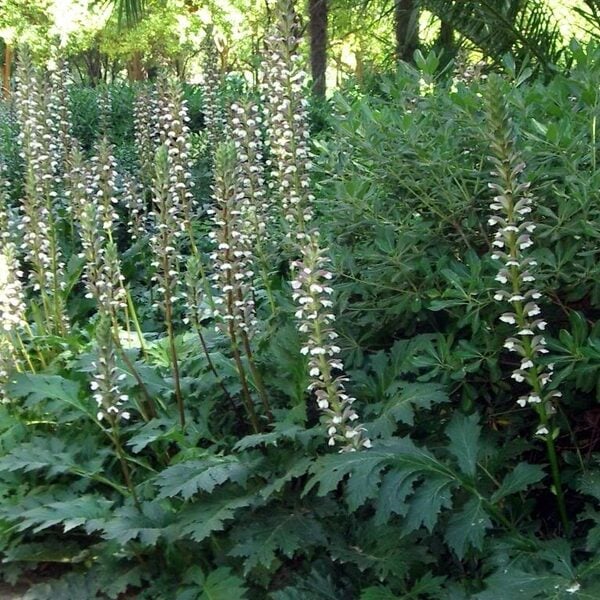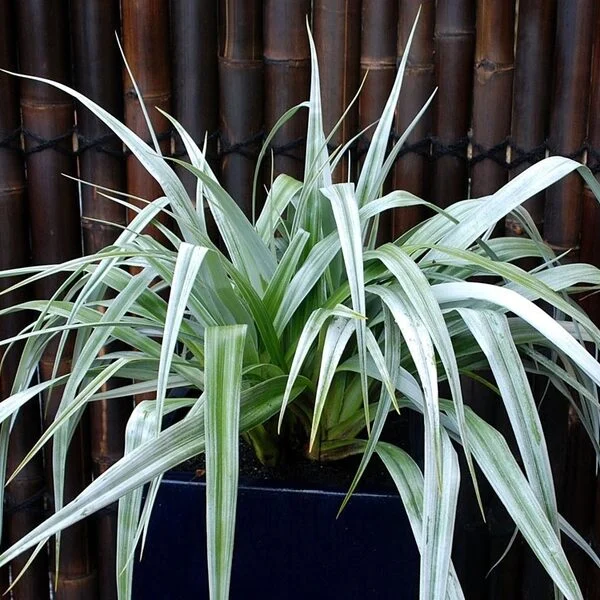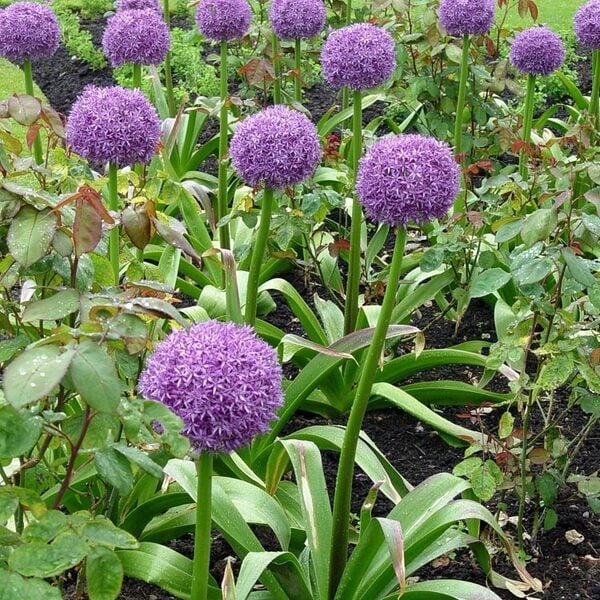Rhus Typhina ‘Dissecta’ (Sumach Tree)
Small, deciduous tree with large, soft cut leaves that turn brilliant scarlet in autumn. Maximum height 15ft. Deep red fruits on female plants. A sunny spot needed. Please contact us for stock availability and sizes.

Hardiness level Green
A lovely domed shape, brilliant autumn colour (it's deciduous), dark red sticky up flowers, tough as old boots and branches covered in furry stuff (hence the Stag's Horn name).
All the way from the Appalachian Mountains in the U.S.A. this little spreading tree grows to 15ft maximum. Its habit of suckering can be turned from a disadvantage to an advantage by selecting the best suckers and creating a little wood of them - or a 'bosco' as we would describe it when rather pretentiously slipping into Italian from time to time. If a bosco is not required than neither are the suckers. Mow them, cut them off or dig them up.
It needs space and light to work best - to display its wonderful shape and its autumn colour.
Propagated from suckers and cuttings.
N.B. When clipping several plants with the same tool, have a bucket containing a 5% bleach solution and swish your blades around for 30 seconds between plants to sterilise them. This will help avoid the chance of cross contamination of disease.
As with all woody plants, plant high, exposing as much of the taper at the base of the trunk as possible. Allowing soil to accumulate round the base of a tree can be fatal. Keep very well watered when first planted.
Additional Information |
|
|---|---|
| Soil Type | Clay, Dry / Well Drained, Sandy, Shingle / Beach, Soggy /Damp (Plant high and you can get away with murder) |
| Light | |
| Plant Type | |
| Continent of Origin | |
| Specialist Plants | |
| Features | |
| Tree Size | |
| Situation | Coastal, Exposed (To wind and sun), Mild City Gardens, Seaside, Sheltered Garden |
| Flower Colour | |
| Hardiness | |




